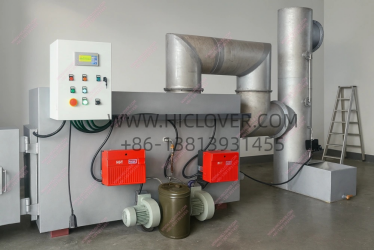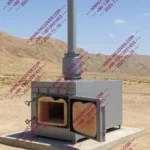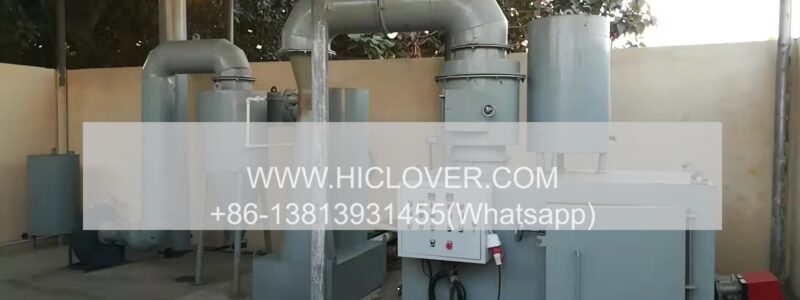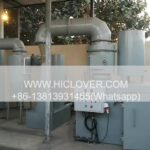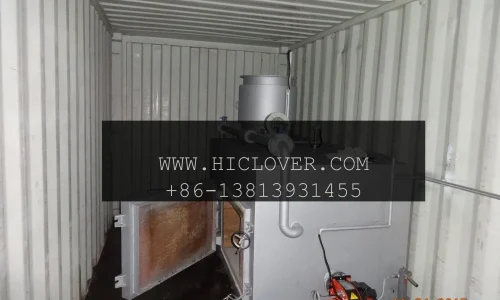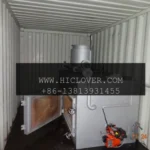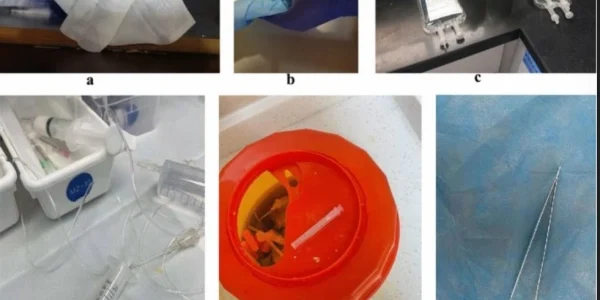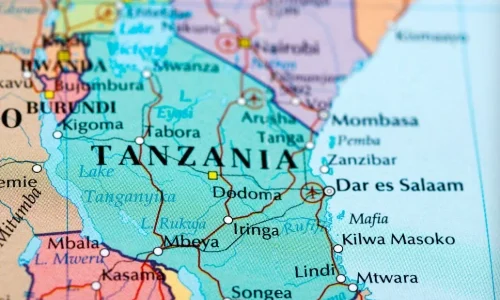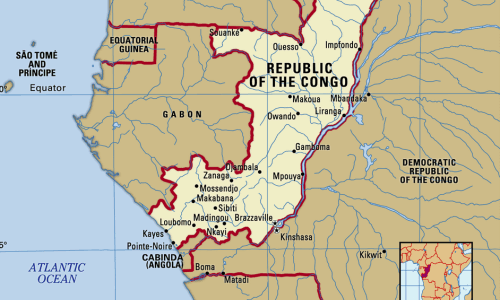Reliable Medical Waste Incineration Solution for Healthcare Facilities ― HICLOVER TS50 (PLC)
The HICLOVER TS50 PLC Medical Waste Incinerator is a high-performance, double-chamber system engineered for efficient, compliant, and environmentally safe disposal of infectious healthcare waste. Designed for field operations and permanent installations alike, this model provides reliable waste reduction for healthcare institutions, vaccination programs, and emergency medical projects.
With its PLC automated control system, durable refractory construction, and integrated dry or wet scrubbing system, the TS50 ensures operational safety and long-term sustainability in demanding environments such as Afghanistan’s healthcare projects.
Performance Specifications
| Parameter | Specification |
|---|---|
| Model | HICLOVER TS50 (PLC) |
| Processing Capacity | 30C35 kg/hour (Paktya) and 40C50 kg/hour (Kandahar, Nangarhar, Herat, Balkh) |
| Cycle Time | 60C90 minutes |
| Chamber Design | Double combustion chamber |
| Max. Dimensions | 2 m × 4 m |
| Fuel Type | Diesel fuel oil |
| Electrical Supply | 220V, single-phase, 50Hz |
| Primary Chamber Temperature | ≥ 850°C |
| Secondary Chamber Temperature | ≥ 1100°C |
| Gas Retention Time | ≥ 2 seconds |
| Residue Reduction | ≤ 3% ash by weight |
| Stack Height | Minimum 40 ft, mild/stainless steel with insulation |
| Noise Level | ≤ 85 dBA at 305 mm distance |
Waste Compatibility
The HICLOVER TS50 (PLC) incinerator is purpose-built for infectious medical waste, including:
-
Sharps and contaminated materials
-
Small glass vials and laboratory residues
-
General healthcare and immunization waste
By maintaining consistent combustion at high temperatures, it ensures pathogen destruction and complete oxidation, leaving only sterile ash.
Construction and Materials
The combustion chambers are manufactured with reinforced steel casing designed to withstand internal pressure and temperature stress.
-
Refractory lining: High-alumina castable materials protect the structure and ensure thermal efficiency.
-
No asbestos or mercury components: Fully compliant with modern environmental and occupational safety standards.
-
Access doors and seals: Airtight construction prevents leakage of smoke and unburned gases.
Combustion and Control System
The HICLOVER TS50 integrates a PLC-based automation system, providing operators full control and monitoring capability:
-
Digital display for temperature and time
-
Thermocouples for precise gas temperature measurement
-
Automated burner sequencing and safety interlocks
-
Emergency stop and alarm functions
The dual Riello burners ensure stable ignition and consistent heat levels in both chambers, with full flame monitoring and fuel optimization.
Emission and Air Treatment
Equipped with a wet scrubber system, the TS50 (PLC) significantly reduces flue gas pollutants by washing and neutralizing acid gases, dust, and fine particulates.
Key components include:
-
Multi-stage spray nozzles
-
Demister tower to remove residual moisture
-
Sampling port for emission monitoring and compliance testing
This setup guarantees adherence to WHO and local environmental regulations for medical waste incineration.
Safety Features
-
Fully insulated external surfaces and piping
-
Protective guards on all moving parts
-
Operator PPE kits (heat-resistant gloves, aprons, boots) included
-
Noise suppression below 85 dBA for workplace comfort
Maintenance and Spare Parts
Each TS50 (PLC) unit is supplied with a complete two-year spare parts package, including wear components, sensors, burner parts, and refractory repair materials. HICLOVER’s global service network supports installation, operator training, and maintenance supervision.
This system is ideal for use in provincial health departments such as:
-
Kandahar REMT Premises
-
Nangarhar REMT (Jalalabad)
-
Herat REMT
-
Balkh REMT (Mazar)
-
Paktya REMT Premises
These facilities benefit from on-site waste destruction that eliminates unsafe dumping and open burning, contributing to safer healthcare environments across Afghanistan and other developing regions.
Contact
For detailed quotations and technical support:
HICLOVER Environmental Equipment Co., Ltd.
Website: www.hiclover.com
Email: [email protected]
medical waste incinerator, double chamber incinerator, diesel incinerator, PLC incinerator, wet scrubber system, healthcare waste management, HICLOVER TS50, infectious waste disposal, safe hospital waste treatment, Afghanistan incinerator project.
2025-11-16/10:11:27
|
Incinerator Items/Model |
HICLOVER TS100(PLC)
|
|
Burn Rate (Average) |
100kg/hour |
|
Feed Capacity(Average) |
150kg/feeding |
|
Control Mode |
PLC Automatic |
|
Intelligent Sensor |
Continuously Feeding with Worker Protection |
|
High Temperature Retention(HTR) |
Yes (Adjustable) |
|
Intelligent Save Fuel Function |
Yes |
|
Primary Combustion Chamber |
1200Liters(1.2m3) |
|
Internal Dimensions |
120x100x100cm |
|
Secondary Chamber |
600L |
|
Smoke Filter Chamber |
Yes |
|
Feed Mode |
Manual |
|
Burner Type |
Italy Brand |
|
Temperature Monitor |
Yes |
|
Temperature Thermometer |
Corundum Probe Tube, 1400℃Rate. |
|
Temperature Protection |
Yes |
|
Automatic Cooling |
Yes |
|
Automatic False Alarm |
Yes |
|
Automatic Protection Operator(APO) |
Yes |
|
Time Setting |
Yes |
|
Progress Display Bar |
3.7 in” LCD Screen |
|
Oil Tank |
200L |
|
Chimney Type |
Stainless Steel 304 |
|
1st. Chamber Temperature |
800℃–1000℃ |
|
2nd. Chamber Temperature |
1000℃-1300℃ |
|
Residency Time |
2.0 Sec. |
|
Gross Weight |
7000kg |
|
External Dimensions |
270x170x190cm(Incinerator Main Body) |
|
Burner operation |
Automatic On/Off |
|
Dry Scrubber |
Optional |
|
Wet Scrubber |
Optional |
|
Top Loading Door |
Optional |
|
Asbestos Mercury Material |
None |
|
Heat Heart Technology(HHT) |
Optional |
|
Dual Fuel Type(Oil&Gas) |
Optional |
|
Dual Control Mode(Manual/Automatic) |
Optional |
|
Temperature Record |
Optional |
|
Enhanced Temperature Thermometer |
Optional |
|
Incinerator Operator PPE Kits |
Optional |
|
Backup Spare Parts Kits |
Optional |
|
Mobile Type |
Optional:Containerized/Trailer/Sledge Optional |

